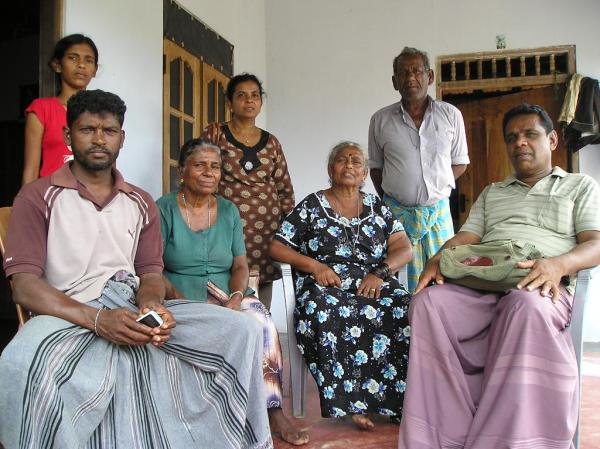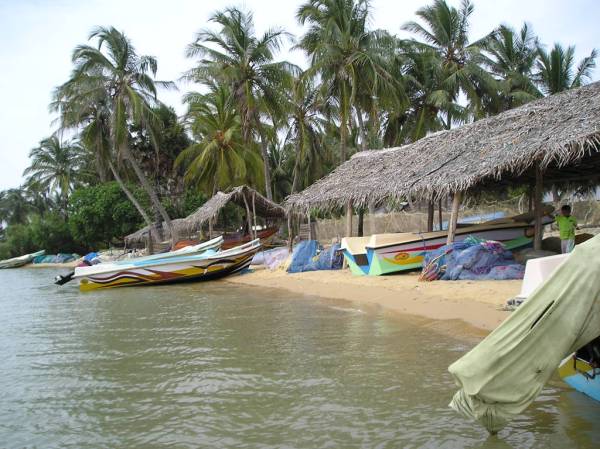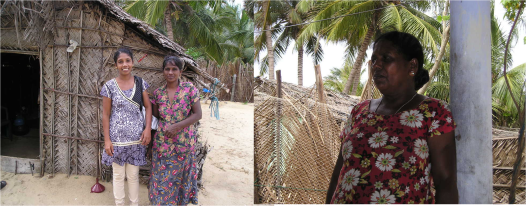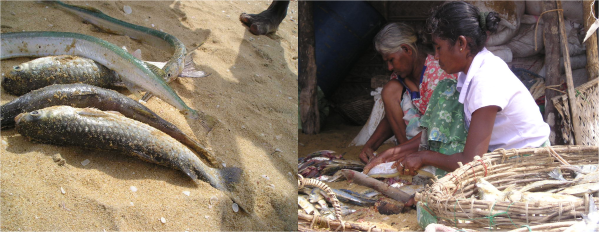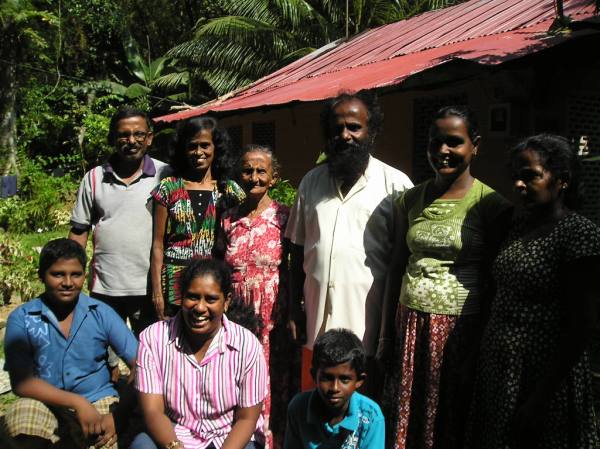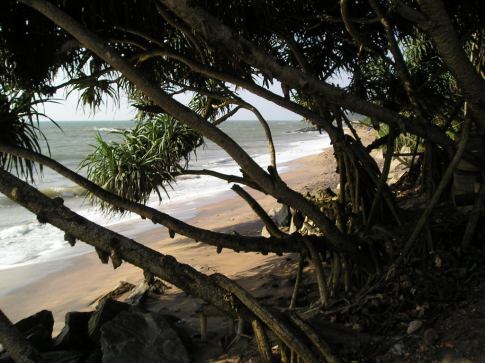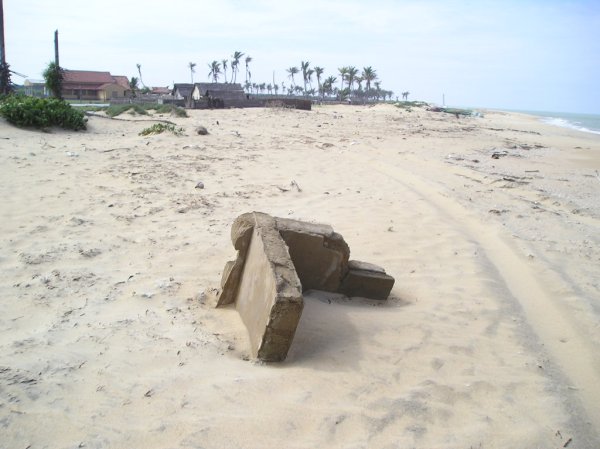 “We used to have a big garden with chilies, potatoes, guava, mango, banana and many coconut trees. All had been washed away”, said Roshanthi.
“We used to have a big garden with chilies, potatoes, guava, mango, banana and many coconut trees. All had been washed away”, said Roshanthi.
Coastal erosion occurs over time due to various factors. The research (Eroding Coast – A serious environmental problem, W. N. Wilson, Department of Georaphy, University of Colombo and S. N. Wickramarate, Department of Geography, University of Peradeniya, the year of publish unknown, http://thakshana.nsf.ac.lk/pdf/VIDURAWA/VIDU_12_1/VIDU%2012_1_7.pdf) considered the natural and human factors which contribute to the coastal erosion. Natural factors include wind factor, coast orientation, littoral drift, compartmentalisation, natural sand supply, lithology, continental shelf topography and sea level changes. Human factors included coral mining, sand mining, destruction of beach-rock, construction and destruction of vegetation. Although the research pointed out the correlation between sea level rise and coastal erosion, it only said “it is not possible to express a definite views on this at present”.
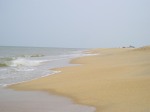 There is very few information on the sea level rise around Sri Lanka available on line. We may, however, consider the sea level rise as an effect of climate change is one of the important factors prompting the erosion along the coasts of Sri Lanka given the similar cases found around the world.
There is very few information on the sea level rise around Sri Lanka available on line. We may, however, consider the sea level rise as an effect of climate change is one of the important factors prompting the erosion along the coasts of Sri Lanka given the similar cases found around the world.
Kalpitiya
People in Kalpitiya, like other coastal areas in Sri Lanka, have been seriously affected by the coastal erosion and inundation.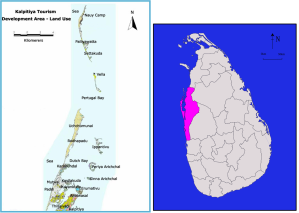
Most of the fisherfolk in Kalpitiya interviewed by National Fisheries Solidarity Movement (NAFSO) are migrants, have moved from other part of the Kalpitiya peninsula such as Keerimundal due to coastal erosion and inundation.
According to the research conducted by NAFSO, changes in the climate cycles and weather patterns are clearly felt by the fisher women in Kalpitiya, particularly higher sea level during the high tide, unseasonal monsoons and stronger gales.They pointed out that the narrow stretch of sand bar has submerged, which let more water come in towards the shore. They felt water level rises higher particularly during Dec-May (relatively dry season with strong wind in this area).
Since they do not own land in the new place, they filled the shore or wetland with sands and stones to create land and built houses. They built their houses with available materials like coconut leaves, cement brocks, some were built by NGOs. On such fragile land, they are still vulnerable to inundation.
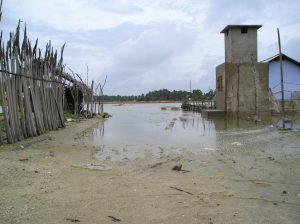 Water sometimes rises above the floor level. Some people evacuate to their relatives while some have to remain home staying on the table if there is no other places to go. Children cannot go to school.
Water sometimes rises above the floor level. Some people evacuate to their relatives while some have to remain home staying on the table if there is no other places to go. Children cannot go to school.
The local government did not allow them to stay without permits. People had to fight for it. They have the votes. The villagers feel the local government does nothing for them. Only during the election campaigns they come to give them empty promises.
Some have electricity with regular power cuts. Some don’t but use kerosene lamps. Some even do not have a lamp.
There is a private owned water tank built in the community. Villagers have to pay 3-400 Rs or more per month for drinking water.
There is no toilet at home but communal ones. Without proper toilet it is difficult particularly when the area gets flooded. They buy firewood from the shops for cooking.
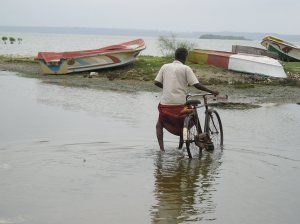 According to the report by NAFSO, women’s lack of property ownership in the family is hindrance for social progress of women in the society. Some of the laws and traditional customary practices prevent women from owning the family properties when there are men in the family. No legal deeds of land ownership for women. None of the boat out of 4109 with outboard motors is owned by women in Kalpitiya.
According to the report by NAFSO, women’s lack of property ownership in the family is hindrance for social progress of women in the society. Some of the laws and traditional customary practices prevent women from owning the family properties when there are men in the family. No legal deeds of land ownership for women. None of the boat out of 4109 with outboard motors is owned by women in Kalpitiya.
Another serious issue affecting fisherfolk in Kalpitiya is the construction of the tourist attractions such as hotels and resort compound with private beach, which often grabbed the land from the local fisherfolk without consultation process and just compensation. For more on this issue, please see:
- “Sri Lanka lagoon set for tourist development”, http://www.bbc.co.uk/news/world-south-asia-15334372
- “Fact Finding Mission on Land & Sea Grabbing issues at Kalpitiya Islands in Puttlam district in Sri Lanka”, http://goo.gl/XE3H6
Shinakudripu, Kalpitiya
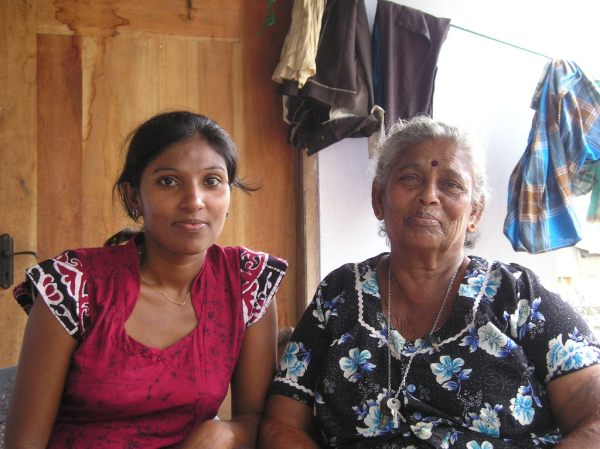 Launa Meuri Farida is 60 years old with five children and husband (one child died earlier). Her family moved from Keerimundal in the 90s. Her house was built by an NGO.
Launa Meuri Farida is 60 years old with five children and husband (one child died earlier). Her family moved from Keerimundal in the 90s. Her house was built by an NGO.
Her husband used to go fishing but after he had his eyes operated, he makes and mends nets instead. She used to dry fish but due to the fish price increase, (she used to buy and make dry fish to sell) she makes and mends the fishing nets, too.
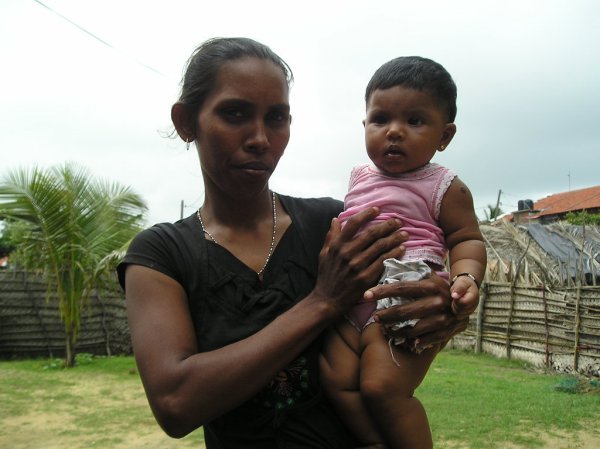 Patricia is 28 years old with four children and husband. Her family moved from Keerimundal in the 90s due to the coastal erosion. “There are very few families left there. There were 650 families but now only 25 families left”, she said.
Patricia is 28 years old with four children and husband. Her family moved from Keerimundal in the 90s due to the coastal erosion. “There are very few families left there. There were 650 families but now only 25 families left”, she said.
She and her husband used to go to the market and cut fish but now she has a small child. She cooks breakfast and sell to pupils and students. She gets up at around 3-4 am, takes care of her baby and prepares the breakfast to sell. After selling breakfast, she sends her children to school, prepares lunch, does all other house work, prepares for tomorrow’s cooking (grinding fish, etc.), prepares dinner, and around at 9-10pm goes to bed.
Keerimundal
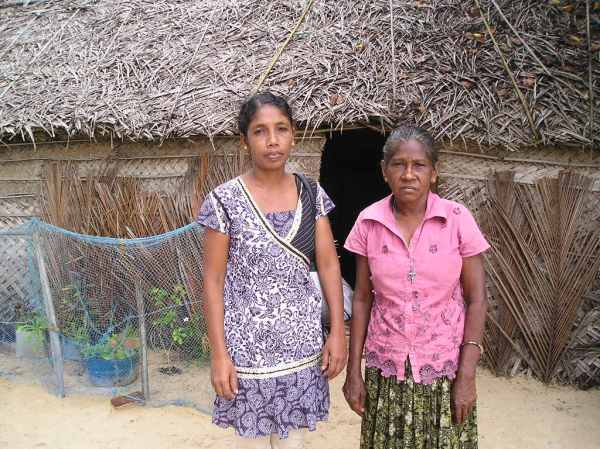 Roshanthi Fernando’s family is originally from Keerimundal, which is located on the peninsula. She shared her memory of Keerimundal. “It used to be a big and beautiful village with many big houses and churches. It was covered with many coconut trees. Her family used to live here for generations but moved to Kalpitiya in 1993. It was difficult in Keerimundal to access to hospitals, schools and other facilities most of which are located in the Kalpitiya town across the lagoon, no water facilities available. The sea water often inundated her house, which destroyed the houses built by her great grand father and rebuilt by her grand father. The navy and the LTTE were also present there.
Roshanthi Fernando’s family is originally from Keerimundal, which is located on the peninsula. She shared her memory of Keerimundal. “It used to be a big and beautiful village with many big houses and churches. It was covered with many coconut trees. Her family used to live here for generations but moved to Kalpitiya in 1993. It was difficult in Keerimundal to access to hospitals, schools and other facilities most of which are located in the Kalpitiya town across the lagoon, no water facilities available. The sea water often inundated her house, which destroyed the houses built by her great grand father and rebuilt by her grand father. The navy and the LTTE were also present there.
Uchimunai
The sandy stretch of the area has been washed by the waves from Indian Ocean on one side and the lagoon on the other.
Mary Teresa Laten, Rosaline Dayas and Arole Mary are among the few who remain in Uchimunai engaging in dry fishing and cutting fish, but many families have already left.
They are members of women’s association, Holy Cross Women’s Society, which Roshanthi coordinates. Members discuss and manage the problems they face in their daily life collectively. They are also involved in mangrove reconstruction, income generation such as making fishing nets. They have recently started exploring handicraft making using natural materials such as coconut husks, leaves of Palmyra Palm and reusing other wasted materials.
Kalutara
Coastal erosion has been experienced by the fishing communities in Kalutara, southwest coast of Sri Lanka, too. “This beach used to be wider, had more land”, Damayanthi recalled. 250 fisher people go fishing from this beach. “There used to be houses on the shore, but all gone”, said Damayanthi.
The resent article tells a similar story: “Little concern for sea erosion in Kandakuliya”, The Sunday Times, December 2, 2012, http://www.sundaytimes.lk/121202/news/little-concern-for-sea-erosion-in-kandakuliya-22954.html

